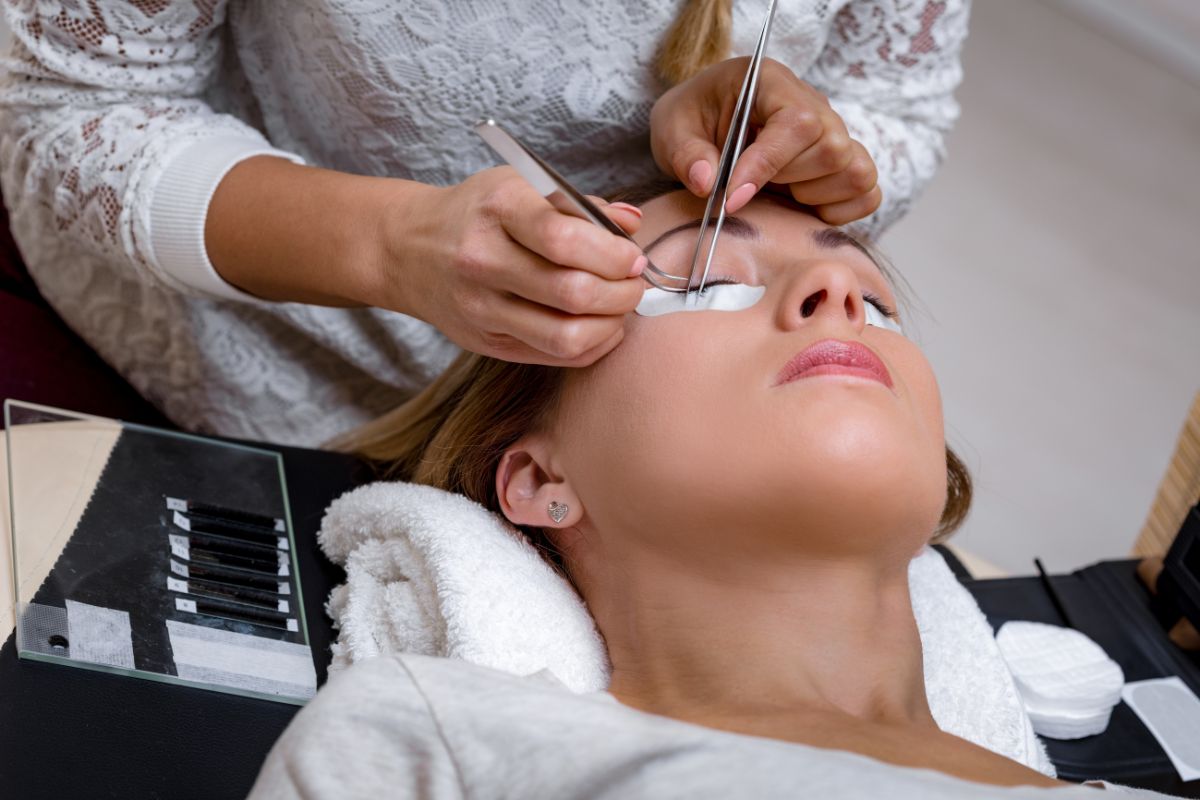Eyelash extensions have become a popular beauty trend, allowing individuals to enhance their natural lashes for a fuller, more dramatic look. However, achieving long-lasting results with eyelash extensions requires careful attention to various factors, including the environment in which the procedure takes place.
Among these factors, temperature and humidity play crucial roles in determining the efficacy and longevity of eyelash extension glue. In this blog post, we delve into the intricate relationship between temperature, humidity, and eyelash extension glue & adhesive, shedding light on how these environmental variables can affect the outcome of your lash extensions.
Understanding Eyelash Extension Glue
Before delving into the effects of temperature and humidity, it’s essential to understand the role of eyelash extension glue in the bonding process. Eyelash extension glue, often called adhesive, is a specialized formula designed to create a strong bond between synthetic and natural lash extensions. This adhesive typically contains cyanoacrylate, a fast-drying and durable compound that forms a secure attachment between the lashes.
The Importance of Temperature
Temperature plays a significant role in the curing process of eyelash extension glue. Most eyelash extension adhesives are formulated to cure (or dry) rapidly when exposed to air. Higher temperatures can accelerate the curing process, causing the adhesive to set more quickly. Conversely, lower temperatures can slow the curing process, prolonging the adhesive’s drying time.
In warmer environments, such as during the summer months or in rooms with elevated temperatures, eyelash extension glue may cure too quickly, making it challenging for technicians to achieve precise placement of the lash extensions. This rapid curing can also lead to a weaker bond between the extensions and natural lashes, compromising the longevity of the lashes. On the other hand, colder temperatures can pose challenges during the eyelash extension application process.
In colder environments, the adhesive may take longer to cure, requiring technicians to wait longer between applying each lash extension. Additionally, cold temperatures can cause the adhesive to thicken, making it more challenging to work with and potentially affecting the quality of the bond.
Finding the optimal temperature for eyelash extension application is crucial for achieving the best results. Most adhesive manufacturers recommend working in a temperature-controlled environment, ideally between 68°F to 72°F (20°C to 22°C), to ensure consistent curing and bonding of the lash extensions.
The Role of Humidity
Humidity refers to the amount of moisture in the air and can also influence the performance of eyelash extension glue. Similar to temperature, humidity levels can affect the curing time and bond strength of the adhesive. In high-humidity environments, such as tropical climates or areas with excessive moisture, eyelash extension glue may cure more slowly due to the increased moisture content in the air.
Excess humidity can also cause the adhesive to become tacky, making it challenging to work with and potentially leading to poor adhesion between the lashes. Conversely, low-humidity environments, such as arid regions or heated indoor spaces during the winter months, can accelerate the curing process of eyelash extension glue.
In dry conditions, the adhesive may dry too quickly, leading to premature curing and potentially compromising the bond strength of the lash extensions. Maintaining an optimal balance of humidity is essential for achieving successful eyelash extension application. Most adhesive manufacturers recommend working in environments with moderate humidity levels, ideally between 40% and 60%, to ensure consistent bonding and longevity of the lash extensions.
Tips for Managing Temperature and Humidity
To optimize the performance of eyelash extension glue, technicians can implement several strategies to manage temperature and humidity levels during the application process:
Use a Temperature-Controlled Environment
Work in a room with adjustable heating and cooling systems to maintain a consistent temperature throughout the eyelash extension application process.
Monitor Humidity Levels
Invest in a hygrometer to measure the humidity levels in the workspace and adjust accordingly to maintain optimal conditions.
Use a Dehumidifier or Humidifier
Depending on the ambient humidity levels, use a dehumidifier to reduce excess moisture or increase humidity levels as needed.
Store Adhesive Properly
Store eyelash extension adhesive in a cool, dry place away from direct sunlight to prevent fluctuations in temperature and humidity, which can affect the performance of the adhesive.
Work Efficiently
To minimize the impact of temperature and humidity fluctuations, work efficiently during the eyelash extension application process and avoid prolonged exposure to air.
Conclusion
Temperature and humidity are critical factors that can significantly impact the performance and longevity of eyelash extension glue. By understanding the relationship between these environmental variables and adhesive properties, technicians can create an optimal working environment for successful lash extension applications.
By maintaining consistent temperature and humidity levels, technicians can achieve precise bonding and ensure the longevity of their clients’ eyelash extensions, ultimately enhancing the overall satisfaction and experience of lash extension treatments.












